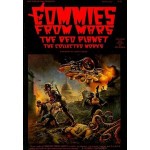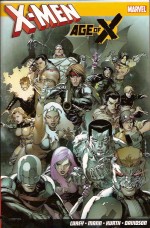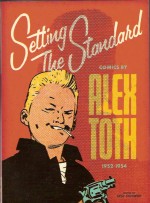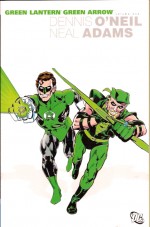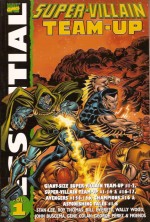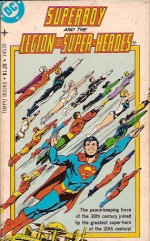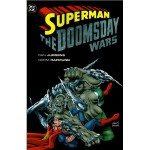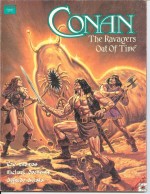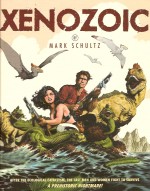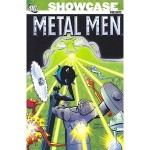
By Robert Kanigher, Mike Sekowsky, Ross Andru, Mike Esposito & various (DC Comics)
ISBN: 978-1-4012-1559-0
The Metal Men first appeared in four consecutive issues of National/DC’s try-out title Showcase: legendarily created over a weekend by Kanigher – after an intended feature blew its press deadline – and rapidly rendered by the art-team of Ross Andru and Mike Esposito. This last-minute filler attracted a large readership’s eager attention and within months of their fourth and final adventure the gleaming gladiatorial gadgets were stars of their own title.
This second sterling black and white chronicle collects the solid gold stories from Metal Men #16-35 and the second of their nine team-up appearances in Brave and the Bold; in this case #66.
Brilliant young Einstein Will Magnus constructed a doomsday squad of self-regulating, intelligent automatons, governed by micro-supercomputers dubbed “Responsometersâ€.
These miracles of micro-engineering not only simulate – or perhaps create – thought processes and emotional character for the robots but constantly reprograms the base form – allowing them to change their shapes.
Magnus patterned his handmade heroes on pure metals, with Gold as leader of a tight knit team consisting of Iron, Lead, Mercury, Platinum and Tin warriors. Thanks to their responsometers, each robot specialised in physical changes based on its elemental properties but due to some quirk of programming the robots developed personality traits mimicking the metaphorical attributes of their base metal.
This compendium takes the high tech team through the best and worst of the 1960s “Camp Craze†and solidly into the bizarrely experimental phase that presaged the temporary decline of costumed heroes and rise of mystery and supernatural comics.
Metal Men #16 (October-November 1966) opens the proceedings as creative team Robert Kanigher, Ross Andru & Mike Esposito pulled out all the stops for the spectacularly whacky ‘Robots for Sale!’
Platinum or “Tina†always believed herself passionately in love with Magnus and his constant rebuffs regularly drove her crazy. Here his latest rejection made her so mad she fled into space and when the rest of the Metal Men chased her they all ended up reduced to doll size on a derelict planet where ravenous mechanical termites had almost destroyed the native wooden robots that lived there.
Issue #17 depicted Tina’s worst nightmare as Magnus and his motley metal crew investigated cosmic cobwebs which fell to Earth and the inventor was bewitched by a horrifying mechanical Black Widow in ‘I Married a Robot!’, whilst the team tackled a terrifying technological Tyrannosaur in #18’s ‘The Dinosaur Who Stayed for Dinner!’
‘The Man-Horse of Hades!’ featured a supernatural and mythic menace who had waited centuries for his true love to return before mistaking Tina for his missing “centauretteâ€, after which the Alloyed Avengers met Metamorpho, the Element Man in Brave and the Bold #66 (June-July 1966).
‘Wreck the Renegade Robots’ by Bob Haney & Mike Sekowsky saw the freakish hero turn to Doc Magnus to remedy his unwelcome elemental condition just as utterly mad scientist Kurt Borian resurfaced with his own Metal Men, extremely distressed that somebody else had patented the idea first.
Tragically, the only way to stop Borian’s rampage involved reversing Metamorpho’s cure…
‘Birthday Cake for a Cannibal Robot!’ featured a second appearance for Robert Kanigher’s craziest creation. Egg Fu was a colossal ovoid Chinese Communist robot determined to “Destloy Amelica†(I know, I know: different times OK?). The mechanical mastermind had first battled Wonder Woman, but resurfaced here to crush the West’s greatest artificial heroes with a giant automaton of his own, whilst ‘The Metal Men vs the Plastic Perils!’ played it all slightly more seriously in a guest-star stuffed romp (Batman, Robin, Wonder Woman and Flash) pitting the team against criminal genius Professor Bravo and his synthetic stalwarts Ethylene, Styrene, Polythene, Silicone and Methacrylate…
Soviet scientist Professor Snakelocks unleashed an unpredictable synthetic life-form against the heroes in #22’s ‘Attack of the Sizzler!’ before launching an invasion of America and, although they could handle hordes of mechanical Cossacks, they were completely outgunned when the sparkling synthezoid transformed Doc into a robot and the Metal Men into humans…
Issue #23 saw the robots restored but Doc still steel-shod as they faced ‘The Rage of the Lizard!’ – another sinister spy attacking the Free World – but before the inevitable end, Magnus too had regained his mortal form. Unfortunately Tina and Sizzler had become rivals for his attentions…
Metal Men #24 pitted the expanded team against a monstrous marauding inflatable alien in ‘The Balloon Man Hangs High!’ after which the ‘Return of Chemo…the Chemical Menace!’ saw tragedy strike as the Sizzler was destroyed and Doc grievously injured just before the toxic terror attacked. Mercifully the Shiny Sentinels proved equal to the task even without their mentor-inventor and it was back to regular zaniness for #26’s ‘Menace of the Metal Mods!’ wherein mechanical fashion icons went on a robbing rampage. ‘The Startling Origin of the Metal Men!’ rehashed their first mission as a modern Mongol Genghis Khan launched an anti-American assault.
‘You Can’t Trust a Robot!’ saw a fugitive gang-boss take control of the Metal Men’s spare bodies, resulting in a spectacular “evil-twin†battle between good and bad mechanoids, after which it was back into outer space to battle ‘The Robot Eater of Metalas 5!’ and his resource hungry masters – a staggeringly spectacular romp which marked an end for the Kanigher, Andru &Esposito team’s connection with the series.
Metal Men #30 (February-March 1968) featured the first of two fill-in issues by Otto Binder and Gil Kane – with Esposito hanging on to provide inks – after which a whole new and highly radical retooling was undertaken.
In ‘Terrors of the Forbidden Dimension!’ the Handmade Heroes were forced to travel to other realms in search of a cure when Magnus fell into a coma after a lab accident. No sooner did they defeat a host of hazards to fix him than he insulted them by building another team! Issue #31’s ‘The Amazing School for Robots!’ introduced Silver, Cobalt, Osmium, Gallium, Zinc and Iridium – although she preferred “Iridiaâ€â€¦
It was all barely manageable until disembodied alien intelligence Darzz the Dictator possessed the newcomers and civil war broke out…
By1968 superhero comics were in steep and rapid decline. Panicked publishers sought new ways to keep audiences as tastes changed and back then, the entire industry depended on newsstand sales, so if you weren’t popular, you died.
Editors Jack Miller and George Kashdan tapped veteran Mike Sekowsky to stop the metal fatigue and he had a radical solution: the same nuts and bolts overhaul he was simultaneously spearheading with Denny O’Neil on the de-powered Diana Prince: Wonder Woman.
The enchantingly eccentric art of Sekowsky had been a DC mainstay for decades and his unique take on the Justice League of America had cemented its overwhelming success. He had also scored big with Gold Key’s Man from Uncle and Tower Comics’ T.H.U.N.D.E.R. Agents and Fight The Enemy!
Now he was creatively stretching himself with a number of experimental, youth-targeted projects; tapping into the teen zeitgeist with the Easy Rider-like drama Jason’s Quest, new sci-fi project Manhunter 2070, the hopelessly moribund Amazon and eventually Supergirl.
Sekowsky began conservatively enough in #32 and Binder scripted ‘The Metal Women Blues!’ wherein Doc built counterparts and companions for his valiant crew with disastrous results, after which the new “relevancy†direction debuted in The New Hunted Metal Men #33 (August-September 1968).
Kanigher returned as scripter as Sekowsky & George Roussos crafted a darker paranoic tone for ‘Recipe to Kill a Robot!’ wherein the once celebrated team went on the run from humanity. The problems started when Doc increased their power exponentially, causing them to constantly endanger the very people they were trying to help and were compounded when their creator was injured and plunged into another coma.
Pilloried by an unforgiving public and only stopping briefly to defeat an invasion by voracious giant alien insects, the misunderstood mechanoids fled, finding sanctuary with Doc’s brother David – a high ranking military spook.
Issue #33 ‘Death Comes Calling!’ had them encounter a ghastly extraterrestrial force which murderously animated America’s shop manikins after Tina rejected its amorous advances. The carnage and highly visible collateral damage was exacerbated in #35 – the last tale in this masterful monochrome tome – and added to humanity’s collective woes when a vast and love-hungry Volcano Man joined the chase in ‘Danger… Doom Dummies!’
Kanigher’s masterful ability for dreaming up outlandish visual situations and bizarre emotive twists might have dropped out of vogue, but this simply opened the door for more evocative and viscerally emotive content more in keeping with the series’ now teen-aged audience and the best was still to come…
But that’s the stuff of another volume – and ASAP, please!
© 1965-1969, 2008 DC Comics. All Rights Reserved.

